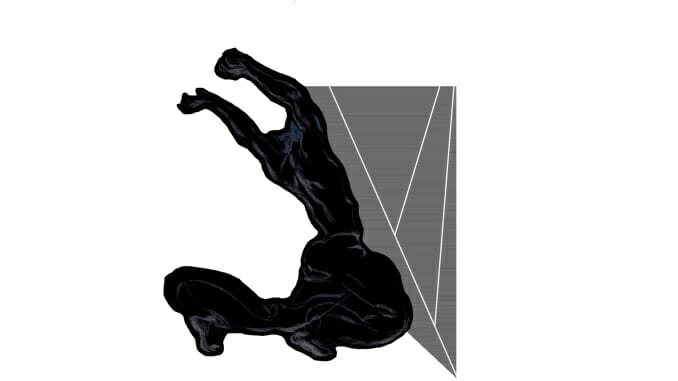Water from Your Eyes Are Peaking on Structure
The fifth album from Nate Amos and Rachel Brown finds them doing what they’ve always done, better than ever before
Music Reviews Water From Your Eyes
Call it cliché, but the only muse Brooklyn duo Water from Your Eyes follow is their own. Try pinning down the exact genre in which Nate Amos and Rachel Brown operate, and you’ll wind up sorely out of luck—acoustic daydreams often precede gently grating electronics, and ballads co-exist with quirky dance numbers. Theirs is the kind of music that feels acoustic when it’s electronic and electronic when it’s acoustic. A great example is how “Saw Them Lie,” a highlight of the pair’s 2018 sophomore album All a Dance—named after one of the album’s most invigoratingly arrhythmic DIY dance-punk tracks—sounds like a synth-pop whisper even though it’s mostly built from guitars. Following that album’s lovably sloppy experimentation, its refinement with 2019’s Somebody Else’s Songs and a dissonant spoken-word detour with last year’s 33:44, Structure is Water from Your Eyes’ first record to boast something consistent: excellent production and melodies across the board.
Did you really think the consistent thing on a Water from Your Eyes album would be a definable sound of any sort after all their years defying convention? No, Structure isn’t finally the album on which Amos and Brown settle on one style—it’s just the one where they make their best songs yet from their longtime foundations. “When You’re Around” opens the LP with Beatles-esque balladry, and then things detour dramatically to the industrial-synth seething of “My Love’s.” Neither song sounds anything like the other, but both are recorded with striking fidelity and clarity that maximize the impact of their innately catchy progressions. The latter is Structure’s only obvious moment of the organic seemingly blending with the electronic, as plucky strings that may or may not be electronic float over repeated electroclash glitching that stands in for a traditional chorus. For the most part, orchestral elements of this sort arise where electronics are lacking, like on the tempo-less horror known as “Monday.”
“Monday” is scary for more than conjuring the start of the workweek. In a track-by-track breakdown the band sent to journalists, Amos described the track as a song for “a movie that doesn’t exist,” and its light musical terrors aptly suit an absence of visuals. More grounded in reality is “Track Five,” which Brown wrote after someone important to them stopped being in their life. “Could leaving last for days? Could ripples reach that far?” they ask during a brief sung-spoken intro that gives the impression of waking up beachside at 4 p.m. after an accidental nap at 2. Thereafter, the song transitions into an aggressive, rolling synth rhythm that’s the most danceable thing yet from a duo already well-versed in making people who normally watch shows with their arms folded loosen up a bit.
“Track Five” is perhaps the most accessible Water from Your Eyes song to date, and Structure as a whole finds the band in its catchiest state yet. Really, the album’s biggest experiment makes the most compelling case for the LP as the pair claiming its stake in straight-up pop. On a track called “Quotations,” rapid-fire bursts of heavily overdriven high-note guitars compete with broken, guttural synths, and the overall effect is like playing Pac-Man at a metal show. What’s in front of you is already colorful and highly stimulating, but the abrasiveness surrounding it makes it feel even more energizing and urgent.
Later, this experiment continues on a track called ““Quotations””—which is the same name as the other song, but with quotations in the track title to truly emphasize its name—as the duo employ the exact same melody and lyrics for an entirely different feel. Conceptualized as the inverse of “Quotations,” ““Quotations”” sounds like an electro-folk band covering the track’s earlier version. It uncovers the sun-streaked beauty inherent to the harshness of its other form, the warm hug that quietly underlies all of Structure. It’s as though Amos and Brown are saying that both sides of the coin have equal weight, that all the pieces of their increasingly complex and exciting puzzle are just as important as one another. For a picture this high-res, they say, every pixel is necessary. Every sound is intentional.
Sometimes, Max Freedman sits and writes about music, and sometimes he just sits. Follow him on Twitter, where he has been hailed as “an incredible person with an incredibly bad internet connection.”